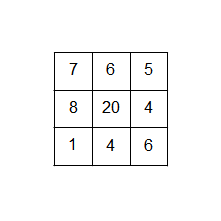OFF files must be conform to format described here: http://www.geomview.org/docs/html/OFF.html
OFF files are mainly used as point cloud inputs. Here is an example of 7 points in a 3-dimensional space. As edges and faces are not used for point set, there is no need to specify them (just set their numbers to 0):
For dimensions bigger than 3, the dimension can be set like here:
# Dimension is no more 3 nOFF # dimension 4 - 7 vertices - 0 face - 0 edge 4 7 0 0 # Point set: 1.0 1.0 0.0 0.0 7.0 0.0 0.0 0.0 4.0 6.0 0.0 0.0 9.0 6.0 0.0 0.0 0.0 14.0 0.0 0.0 2.0 19.0 0.0 0.0 9.0 17.0 0.0 0.0
Such a file, whose extension is usually .pers, contains a list of persistence intervals.
Lines starting with # are ignored (comments).
Other lines might contain 2, 3 or 4 values (the number of values on each line must be the same for all lines):
[[field] dimension] birth death
Here is a simple sample file:
# Persistence diagram example 2 2.7 3.7 2 9.6 14. # Some comments 3 34.2 34.974 4 3. inf
Other sample files can be found in the data/persistence_diagram folder.
Such files can be generated with Gudhi::persistent_cohomology::Persistent_cohomology::output_diagram() and read with Gudhi::read_persistence_intervals_and_dimension(), Gudhi::read_persistence_intervals_grouped_by_dimension() or Gudhi::read_persistence_intervals_in_dimension().
Such a file describes an iso-oriented cuboid with diagonal opposite vertices (min_x, min_y, min_z,...) and (max_x, max_y, max_z, ...). The format is:
min_x min_y [min_z ...] max_x max_y [max_z ...]
Here is a simple sample file in the 3D case:
-1. -1. -1. 1. 1. 1.
This file format is a format inspired from the Perseus software (http://www.sas.upenn.edu/~vnanda/perseus/) by Vidit Nanda. The first line contains a number d begin the dimension of the bitmap (2 in the example below). Next d lines are the numbers of top dimensional cubes in each dimensions (3 and 3 in the example below). Next, in lexicographical order, the filtration of top dimensional cubes is given (1 4 6 8 20 4 7 6 5 in the example below).

The input file for the following complex is:
2 3 3 1 4 6 8 20 4 7 6 5
To indicate periodic boundary conditions in a given direction, then number of top dimensional cells in this direction have to be multiplied by -1. For instance:
2 -3 3 1 4 6 8 20 4 7 6 5
Indicate that we have imposed periodic boundary conditions in the direction x, but not in the direction y.
Other sample files can be found in the data/bitmap folder.
-1's. To do that please set their filtration value to \(+\infty\) (aka. inf in the file). | GUDHI Version 3.1.0 - C++ library for Topological Data Analysis (TDA) and Higher Dimensional Geometry Understanding. - Copyright : MIT | Generated on Mon Jan 20 2020 14:12:57 for GUDHI by Doxygen 1.8.13 |